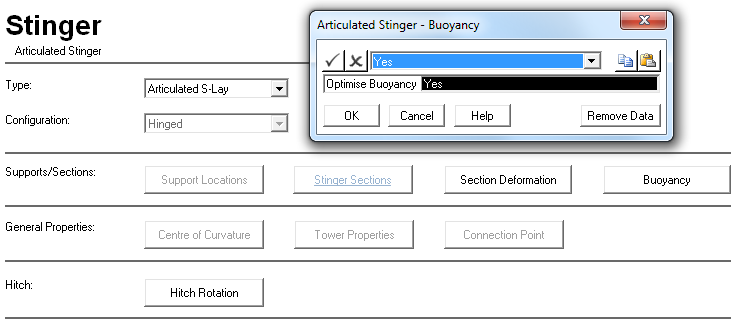•Radii of curvature definitions and support elevation optimisation has been extended to rigid hinged and articulated S-lay stingers – These powerful capabilities can be now used on all S-lay stinger types and should facilitate easier model setup. The movement of supports to specific radii of curvature can also account for changes in hitch rotation meaning that as the hitch rotation changes then so too will the amounts of movement to get the supports on the desired radii.

•Optimum net buoyancy calculation for articulated stinger sections is now automatically performed by the PipeLay analysis engine – The required net buoyancy for stinger sections to maintain certain specified orientations is often an unknown and typically changes from one installation operation to another. The analysis engine can now automatically calculate optimum section buoyancy for a given model so as to achieve a desired set of section angles. This should prove a very productive design feature.

•New Jonswap and Torsethaugen random sea specifications – The new Jonswap specification allows for the definition of Hs, Tp and peakedness together giving greater control to the user. The Torsethaugen random sea is completely new to PipeLay and it allows for a double peaked spectrum that is representative of a combined swell and wind generated sea-state.

•Additional method of water absorption for external coatings – This method is volume based and only affects submerged parts of a line making it more representative of actual absorption during installation.

•Option to account for pipeline contact diameter on seabed – The legacy seabed model only recognised contact with the centreline of the pipe. This was fine for moderate to deep water scenarios, but it was not ideal for shallow water where the pipe diameter was a considerable percentage of the water depth; often to overcome this issue users would have to define a suitable arbitrary seabed. The new contact option on the seabed component allows you to specify whether or not the contact diameter of the pipeline is to be recognised by the seabed and so it will be particularly beneficial for shallow water models.
